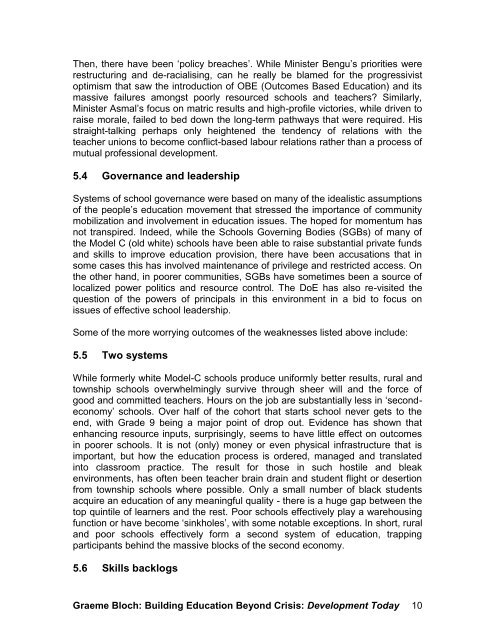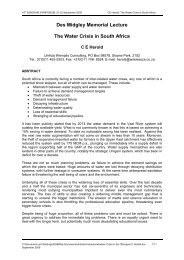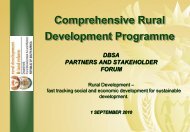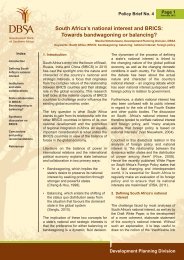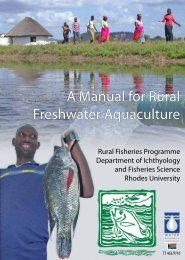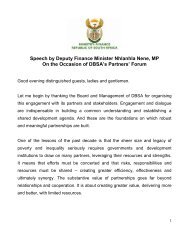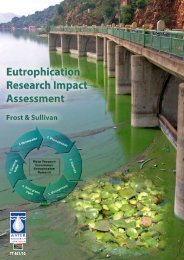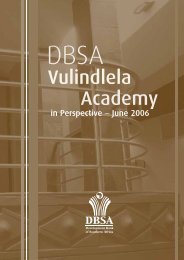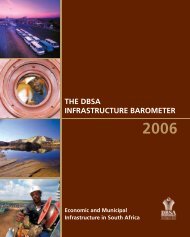Building education beyond crisis.pdf
Building education beyond crisis.pdf
Building education beyond crisis.pdf
You also want an ePaper? Increase the reach of your titles
YUMPU automatically turns print PDFs into web optimized ePapers that Google loves.
Then, there have been ‗policy breaches‘. While Minister Bengu‘s priorities wererestructuring and de-racialising, can he really be blamed for the progressivistoptimism that saw the introduction of OBE (Outcomes Based Education) and itsmassive failures amongst poorly resourced schools and teachers? Similarly,Minister Asmal‘s focus on matric results and high-profile victories, while driven toraise morale, failed to bed down the long-term pathways that were required. Hisstraight-talking perhaps only heightened the tendency of relations with theteacher unions to become conflict-based labour relations rather than a process ofmutual professional development.5.4 Governance and leadershipSystems of school governance were based on many of the idealistic assumptionsof the people‘s <strong>education</strong> movement that stressed the importance of communitymobilization and involvement in <strong>education</strong> issues. The hoped for momentum hasnot transpired. Indeed, while the Schools Governing Bodies (SGBs) of many ofthe Model C (old white) schools have been able to raise substantial private fundsand skills to improve <strong>education</strong> provision, there have been accusations that insome cases this has involved maintenance of privilege and restricted access. Onthe other hand, in poorer communities, SGBs have sometimes been a source oflocalized power politics and resource control. The DoE has also re-visited thequestion of the powers of principals in this environment in a bid to focus onissues of effective school leadership.Some of the more worrying outcomes of the weaknesses listed above include:5.5 Two systemsWhile formerly white Model-C schools produce uniformly better results, rural andtownship schools overwhelmingly survive through sheer will and the force ofgood and committed teachers. Hours on the job are substantially less in ‗secondeconomy‘schools. Over half of the cohort that starts school never gets to theend, with Grade 9 being a major point of drop out. Evidence has shown thatenhancing resource inputs, surprisingly, seems to have little effect on outcomesin poorer schools. It is not (only) money or even physical infrastructure that isimportant, but how the <strong>education</strong> process is ordered, managed and translatedinto classroom practice. The result for those in such hostile and bleakenvironments, has often been teacher brain drain and student flight or desertionfrom township schools where possible. Only a small number of black studentsacquire an <strong>education</strong> of any meaningful quality - there is a huge gap between thetop quintile of learners and the rest. Poor schools effectively play a warehousingfunction or have become ‗sinkholes‘, with some notable exceptions. In short, ruraland poor schools effectively form a second system of <strong>education</strong>, trappingparticipants behind the massive blocks of the second economy.5.6 Skills backlogsGraeme Bloch: <strong>Building</strong> Education Beyond Crisis: Development Today 10


